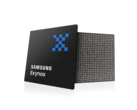Samsung’s Exynos 1000, due in 2021, will likely feature ARM’s new performance enhanced, as we reported yesterday. There are actually official hints of this development buried in yesterday’s PR release accompanying the launch of ARM’s new Cortex-A78 and Cortex-X1 SoC and core architecture. Joonseok Kim, VP of Samsung’s SoC design team is quoted as saying “…we are very excited to see the new direction ARM is taking with the Cortex-X Custom Program, enabling innovation in the Android ecosystem for next-gen user experiences.”
The timing is absolutely right for Samsung after the controversy caused by the variation in performance of Qualcomm Snapdragon 865 variants of its flagship Galaxy S20 range and those powered by its semi-custom in-house Exynos 990 design. It is officially the last Exynos SoC to feature its customized ARM-based Mongoose cores after the company shuttered its Austin-based custom chip R&D team last year after the design of the Exynos 990 had wrapped up. With ARM’s announcement yesterday of its own custom high-performance Cortex-X1 core based on the company’s own new Cortex-A78 core design, it seems as though Samsung realized that diverting resources into core customization wasn’t worth the effort.
However, less convincing is the suggestion by MyDrivers that Qualcomm will also include the Cortex-X1 in its Snapdragon 875 due to be unveiled later this year. Qualcomm has enjoyed a competitive advantage developing its own custom in-house Kryo cores and is unlikely to swap it out for a generic ARM design, even if it is a high-performance core. After all, the positive publicity it achieved from the performance advantage the Snapdragon 865 enjoyed over the Samsung Exynos 990 is what it would be giving up if it did. Where we will also see additional differentiation between the next-generation Snapdragon and Exynos SoC designs is in the GPU department, with a mobile GPU co-developed with AMD a possibility for the Exynos 1000.
The report also aligns with reports that Google is dropping Qualcomm’s Snapdragon 865 this year, either in favor of a mid-range chip from Qualcomm, or a semi-custom collaboration with Samsung. If the latter does eventuate for thee Pixel 5 this year, it is likely that it will be an Exynos 990 variant with Google silicon IP built into it like Google’s own Pixel Visual Core and Titan security silicon. However, given the news that ARM has now developed a special high-performance variant of its Cortex-A78 core, rumors about the potential use of Samsung Exynos silicon in Google smartphones only seems more likely, but might not make the light of day until 2021 in a special variant of the Exynos 1000 design made for Google by Samsung.































